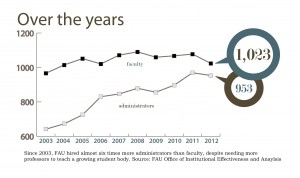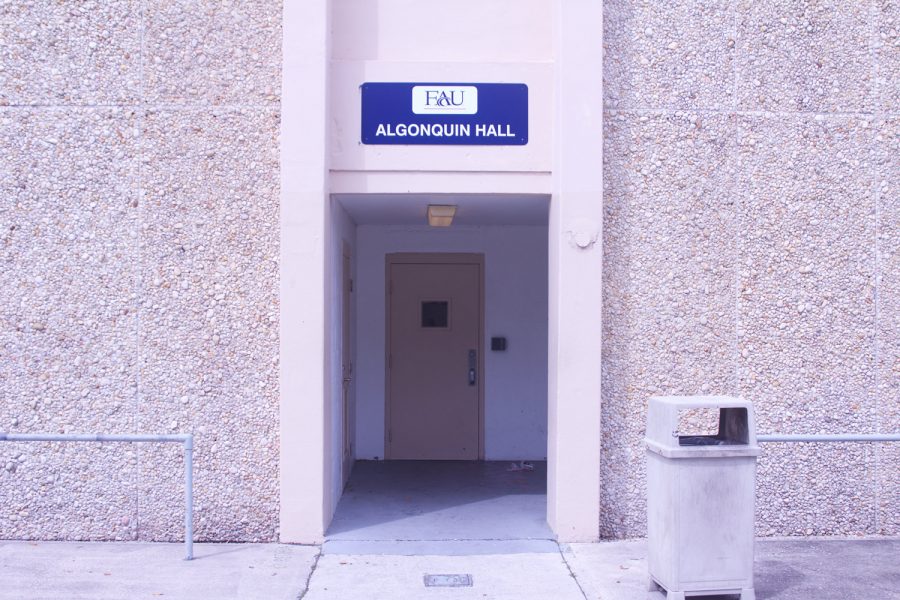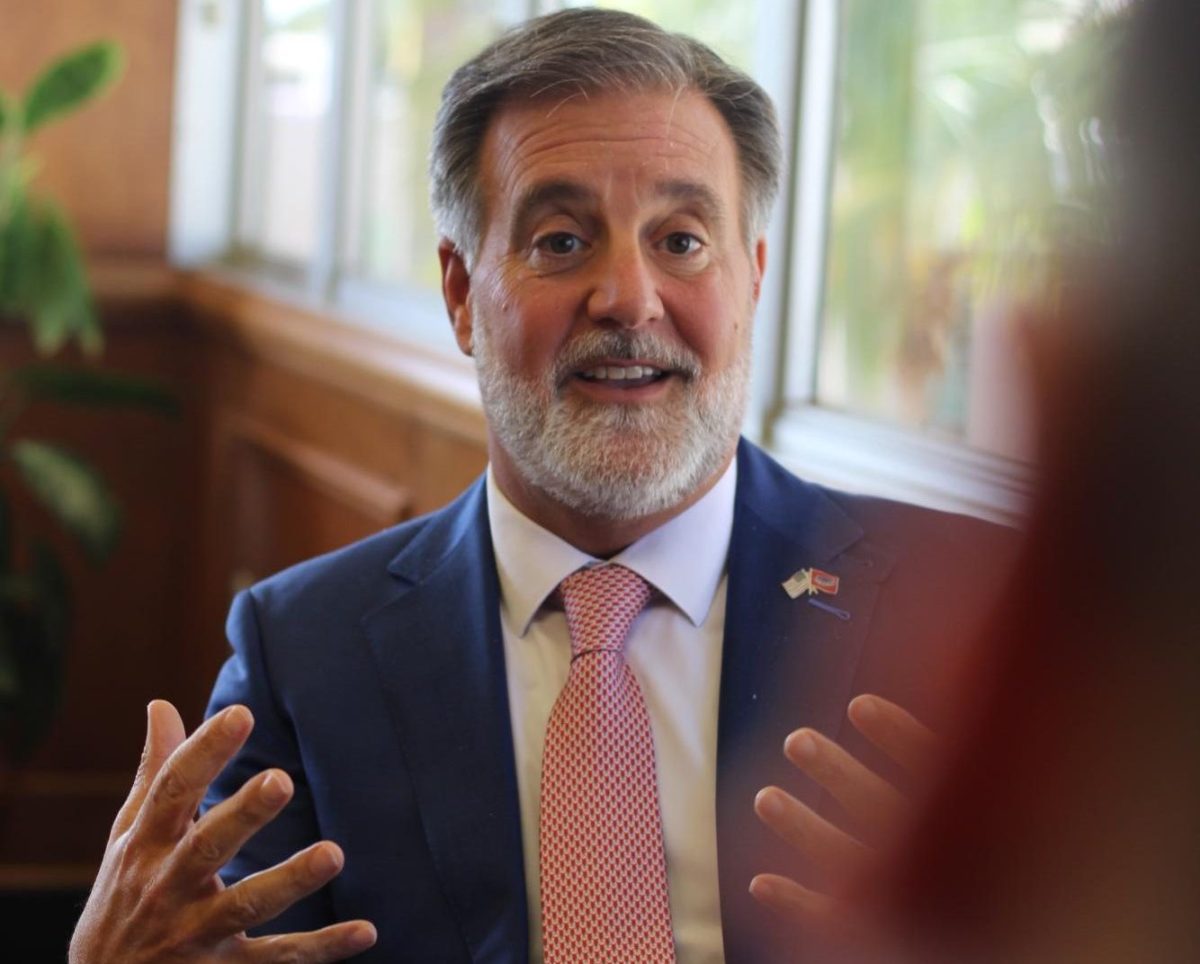
In the last two months, FAU’s President and Provost stepped down, while two more Associate Provosts and a Vice President left for similar jobs at other universities.
Monica Orozco and Janet Cramer, who oversaw the Center for eLearning and Instruction and Assessment, took new Provost positions at universities in New Mexico and Colorado respectively. The third administrator to leave for a new job was FAU’s Vice President of Community Engagement, Jennifer O’Flannery Anderson, who accepted a similar Community Relations vice presidency position at Nova Southeastern University.
But five FAU administrators are drops in the bucket compared to the university’s administrative hiring trends, which are only a reflection of national research on faculty-to-administration ratios.
Over the last ten years, as the amount of FAU administrators employed rose from 642 to more than 950 employed last fall, the amount of faculty employed peaked at 1,090 and then started its descent to 1,023 (see sidebar).
And although FAU is still transitioning into a more traditional university, from being known as a commuter school, traditional Florida universities like FSU have far fewer administrators managing far more faculty members.
Last fall, FSU employed 384 administrators to oversee 1,405 faculty members, according to the university’s Office of Institutional Research. And over the last ten years at FSU, the student body has increased from 37,328 to 41.301.
The trend is not abnormal either. Data from the U.S. Department of Education showed universities throughout the nation had increased the number of administrators by 60 percent from 1993 to 2009. Bloomberg Businessweek reported last November that was “10 times the growth rate for tenured faculty.”
With FAU reaching a record 30,301 student enrollment for the first time last fall, and the university still recovering from the last five years of budget cuts, the university has patiently hired more administrators, despite an increasing student-to-faculty ratio necessitating more professors..
When universities employ fewer faculty as enrollment grows and budgets shrink, while hiring more administrators, the universities suffer, according to the American Association of University Professors’ Director of Research and Public Policy, John Curtis.
“It does seem to be a national trend. Really that leaves us to raise the question of where the priorities are, in terms of the college’s and university’s mission,” Curtis said. He remains uncertain that universities are achieving their missions by hiring more administrators amid cuts in state funding.
“The way a lot of colleges and universities have been handling that is to shift more of their faculty positions from full-time positions to part-time positions, or in some cases, increasing the proportions of positions that are not on the tenured-track,” Curtis said. “That raises the question of how they’re going to focus on the core mission in higher education, which is teaching and research, and that’s what the faculty do.”
More funding for administrative hires means fewer faculty, which translates to larger class sizes for students. This results in greater workloads for employed faculty and less time for them to focus on your education, according to Curtis.
“When you have a continuing shift of faculty positions that are fully supported, so that you have more faculty who are either part-time, or short-term full-time positions … they’re not able to spend the time with the students and really bring the experience from beyond the classroom to students because they’re just not as available,” Curtis said.
The UP reached out to FAU’s Office of University Communications and Marketing with questions about the increasing administrative hires and stagnant faculty hires, but as of publication time, they did not answer them. The UP also reached out to the American Association of University Administrators to see how more administrators might benefit a growing student body, but as of publication time, they had not responded.
And the trend is showing no signs of slowing at FAU.
This year, the university employed 16 fewer administrators compared to last year but that’s almost 50 percent more than the amount that worked here in 2003. And while there may be more students as well, with FAU’s enrollment climbing from 22,859 to 30,301, there are fewer professors to educate them.
In terms of total faculty employed, this year is a 16 percent increase since 2003, but 54 professors and instructors have been let go since last year.
“It’s not that there shouldn’t be any administrative growth,” John Curtis said. “Obviously if the institution is growing, then there probably needs to be growth in terms of all different kinds of staffing.”












